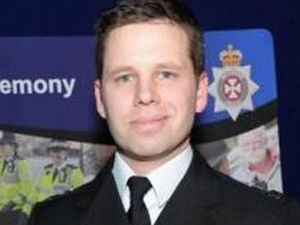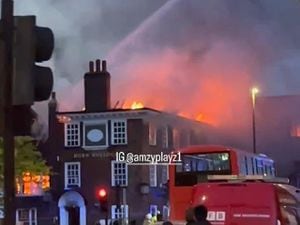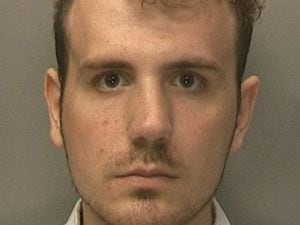Policeman ‘petrified’ after exposure to Novichok in Salisbury inquiry
Detective Sergeant Nick Bailey also said he was ‘angered’ such a substance had been used because it put innocent people at risk.

The policeman who was left critically ill after the attempt to murder former Russian spy Sergei Skripal has said he was “petrified” to find out he had also been exposed to the deadly Novichok nerve agent.
Wiltshire Detective Sergeant Nick Bailey may have come into contact with it when he and two colleagues searched the home of ex-KGB spy Sergei Skripal, 66, and his daughter Yulia, 33, in Salisbury on March 5.
Speaking to the BBC Panorama programme, Mr Bailey also said he was angry that such a substance had been used because it potentially put innocent people at risk.
The Skripals were left fighting for their lives and Mr Bailey shortly afterwards knew something was very wrong when his “pupils were like pin pricks” and he became “quite sweaty and hot,” he told the programme.
He thought he was just tired but the father-of-two worsened and was rushed to hospital.
He recalls that “everything was juddering”, being unsteady and his whole body was dripping with sweat.
Mr Bailey told BBC Panorama: “I didn’t understand how it had happened, scared because it’s the fear of the unknown because it’s such a dangerous thing to have in your system. Knowing how the other two (the Skripals) were or how badly they’d been affected by it, I was petrified.”
Investigators discovered the Novichok had been sprayed on the door handle of the Skripals’ home.

Mr Bailey said: “I don’t know whether, if it’s gone through the gloves, I don’t know whether, I mean, I could have adjusted my face mask and my goggles whilst I was in the house with it being on my hand … It’s such an outrageous, dangerous way of doing something that it angered me as well because any number of people could have been affected by that.”
Mr Bailey was conscious during his time at Salisbury District Hospital, which included lots of injections plus five or six infusions at any one time in his arms. He recalls that one of the Skripals was in the next room and there was a police guard.
He was discharged on March 22 and is now trying to “take each day as it comes” in case there are any long-term health issues to be dealt with.
Mr Bailey also said he was overwhelmed by the public support he has received.
The attack left Mr Skripal and his daughter critically ill and hospitalised for weeks.
Dawn Sturgess, 44, who was later exposed to the same nerve agent after handling a contaminated perfume dispenser, died in July.
Her partner Charlie Rowley was discharged from hospital, three weeks after being exposed to the nerve agent.

Deputy Assistant Commissioner Dean Haydon told Panorama that “a significant amount” of Novichok was found.
When asked how many people it could have killed, he said: “It’s difficult to say, you know, possibly into the thousands. The amount that was in the bottle and the way it was applied to the Skripals’ home address was completely reckless.”
Prime Minister Theresa May told MPs on September 5 that two Russian nationals were suspected of travelling to the UK to try and murder Mr Skripal with Novichok.
Evidence gathered by intelligence agencies led the Government to conclude the men were officers from the Russian military intelligence service, also known as the GRU.
A week later, Russian president Vladimir Putin publicly denied the men identified by the UK were responsible.
Detectives investigating the Salisbury and Amesbury nerve agent incidents released moving footage of the two suspects as they made a new appeal for information from the public.
CCTV footage of the two suspects – known by their aliases Alexander Petrov and Ruslan Boshirov – shows them as they arrive and travel around Salisbury on March 4.
Images of a specially made model of the counterfeit “Nina Ricci” perfume bottle were also issued as detectives from the Counter Terrorism Policing Network continued their investigation.
Mr Haydon said: “We remain as determined as ever to identify and bring to justice all those responsible for the reckless acts that left four people critically ill and, tragically, saw Dawn Sturgess lose her life.
“We are progressing a number of active lines of enquiry but one of the key things we are still to identify is where the counterfeit perfume bottle was between the time we think it was discarded on the afternoon of 4 March, to when Charlie Rowley says he found it on 27 June.
“If you think you saw the pink box or bottle anywhere in the Salisbury area during that time, then please get in touch with us.”





